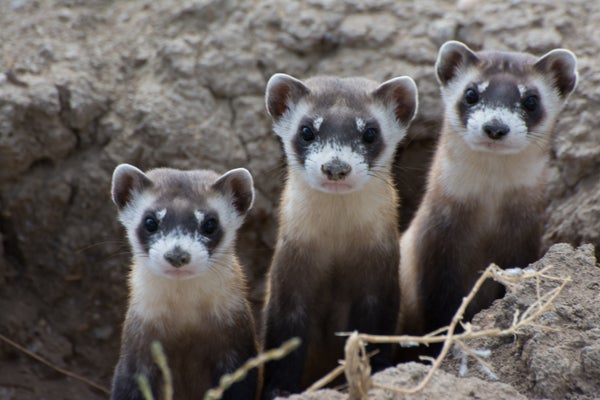This article was published in Scientific American’s former blog network and reflects the views of the author, not necessarily those of Scientific American
Visitors to the Fort Collins Museum of Discovery in Colorado can get a chance to meet a rock star of the wildlife world: a black-footed ferret named Stevie Nicks.
Named after singer Stevie Nicks, this cute and ferocious little carnivore is part of the captive-breeding and release program that has saved her species. Today more than 1,400 black-footed ferrets live in the wild—a major success for a species that was believed to be extinct just 30 years ago.
Unfortunately, Stevie can’t be released to live in the wild—she’s blind, so she could never survive on her own.
On supporting science journalism
If you're enjoying this article, consider supporting our award-winning journalism by subscribing. By purchasing a subscription you are helping to ensure the future of impactful stories about the discoveries and ideas shaping our world today.
But she’s still part of the breeding program, and as a resident of the museum she helps her species by serving as a public face of the extinction crisis. From her safe enclosure, she can inspire visitors who get the rare opportunity to see a live black-footed ferret play and even hunt whenever her keepers give her live rodents.
Black-footed ferrets aren’t out of the woods yet. They still face threats from habitat loss and sylvatic plague and other diseases, but hardworking conservationists have managed to save them from disappearing forever.
Learn more about Stevie and black-footed ferrets in our video below.
This post first appeared on The Revelator on January 22, 2020.
